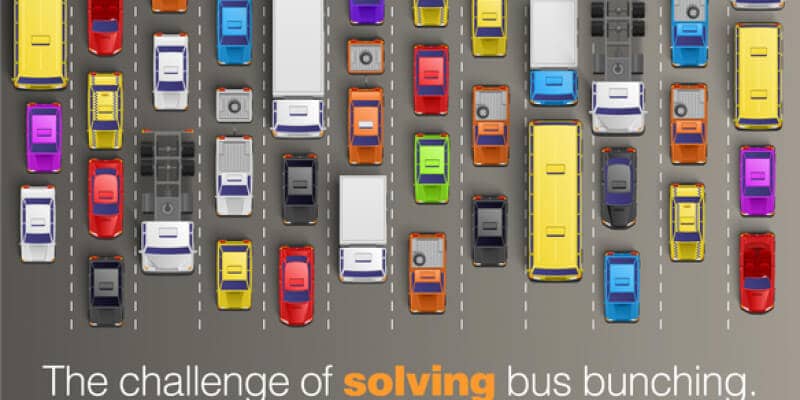Modern transit agencies are continually challenged to improve the efficiency of their operations. It is often a challenging balancing act to minimize passenger wait times while maintaining an efficient passenger load. If vehicles run too closely together, passenger wait times and the efficiency of passenger loads will suffer. (This is when a bus tracker or real time GPS comes in to smooth this problem out, as we’ll explain more.)
Despite the best intentions of transit operators, the bunching of vehicles (buses or shuttles) occurs when two or more vehicles operate on a route, in the same location, at the same time. Also known as clumping, platooning, or convoying, there are numerous contributing factors in bunching—many of which are unavoidable, such as:
- Traffic congestion
- Construction delays and detours
- Varying passenger loads
- Driver behavior
Rather than arriving at a destination at regularly spaced intervals, vehicles on the same assigned route arrive at the same time (or very close together). This has the effect of providing unreliable service for riders in the form of longer wait times and overcrowded vehicles than would normally be present had the schedule been followed.
From an operational standpoint, the impacts of bunching can be just as inconvenient to the agency as it is to the rider:
- More inbound calls
- Less than stellar performance schedule
- Customers complaining
- Overbalanced, increased loads
To solve this, real-time ITS uses GPS solutions (a.k.a. bus tracker) to ensure bunching doesn’t happen. Specifically, bus trackers give visual cues so that potential bunching scenarios can be spotted and then proactive steps can be taken to mitigate that.
Overall, GPS increases operational awareness so that transit agencies are informed of any possible issues and that operators can make informed decisions to decrease the chances of bunching. Because of this technology, riders have a better riding experience—with fewer delays and no overcrowding.

